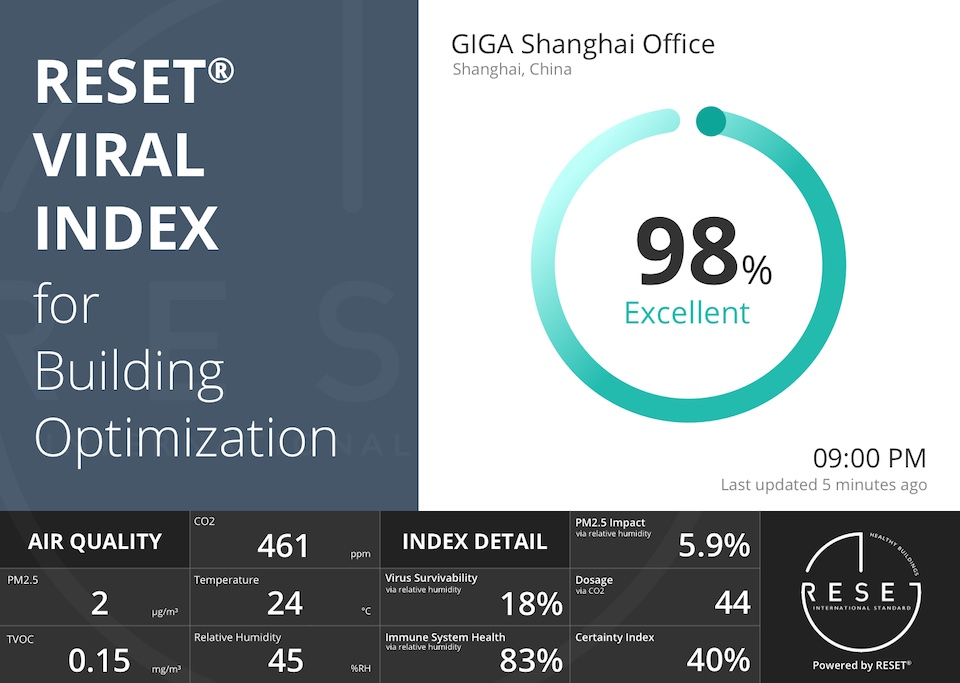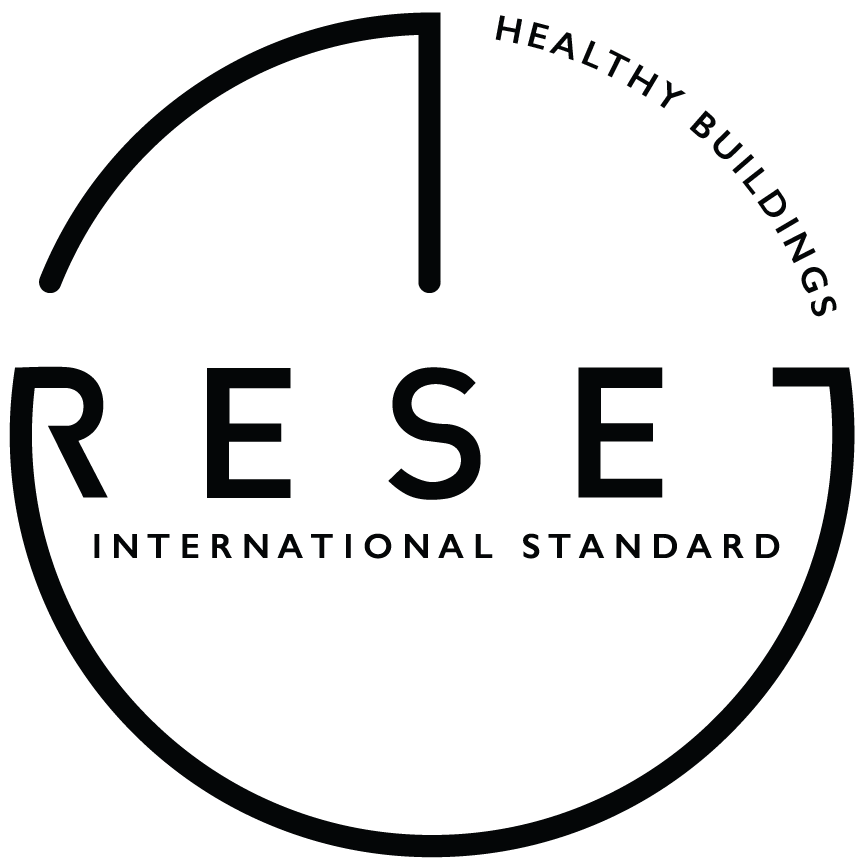RESET Viral Index Whitepaper Published

Image Above: A sample design of the RESET Viral Index Dashboard.
We are excited to announce that the RESET Viral Index is officially published!
The RESET Viral Index informs how well a building is optimized in preventing airborne viral transmissions in an indoor space, leveraging research focused on virus transmission and applying it to continuous monitoring.
The RESET Viral Index breaks down and compiles research and data into the following:
virus survivability (RH%),
the impact on immune system health (RH% and PM2.5),
and exposure or dosage (CO2)
to calculate infection potential, all of which will provide insights into the outcome of operational decisions.
Sponsors
The RESET Viral Index was made possible by the RESET Initiative Sponsors below:
General Tips
Since winter is here and we're in the season where airborne viral transmission is happening at a higher rate (including influenza), we thought we might share a few general insights from what we've learned:
Diluting the air is a great way to lower the potential of airborne viral transmission. The fewer viral particles that a person breathes in, the less likely they will get sick. This also pertains to the seriousness of the symptoms. The RESET Viral Index uses CO2 as a proxy for how well the air is diluted, which is where ventilation comes in.
Aside from diluting the air, maintaining relative humidity between 50%-60% will decrease the length of time the virus can stay airborne and increase your immune system strength. Although not as heavily weighted in the RESET Viral Index algorithm when compared to CO2 and diluted air, humidity can play a big role, especially during the winter when bringing in fresh air requires a lot of heating, which will bring relative humidity down to very low numbers and also require a lot of energy.
Although not reflected in the RESET Viral Index, air filtration, especially with HEPA filters (MERV-13 helps as well) can lower the number of viral particles in the air. Although it is not something that can be directly measured via continuous monitoring, having some set up in an indoor space will lower the chance of viral transmission, helping maintain strong immune systems due to lower levels of particulates in the air.
Download the Whitepaper and Next Steps
For more information and access to the whitepaper, you can visit our resources section on the RESET website: https://reset.build/resources/indexes/viral
To fully leverage the RESET Viral Index, a project would need to do 3 things:
An air quality monitor for continuous monitoring that includes at least: CO2, PM2.5, RH%
Some way to integrate the RESET Viral Index as part of your analytics or display
Automate the HVAC system to maintain a good score for the RESET Viral Index
The above 3 steps can also be used as a guideline on how to take small steps towards a system that can better maintain good indoor air quality.
We hope that the RESET Viral Index will help provide additional insight into balancing indoor air quality to minimize airborne viral transmission. If there are any questions or requests, please do not hesitate to reach out to us at info@reset.build.

